Welcome to a new issue of the Journal of Runic Studies, the premier Malkioni publication for studies into the nature of Glorantha. If you haven’t subscribed yet, please consult with the spirit bound to the appropriate electronic page.
Happy new year everybody! Don’t forget to reset your calendars and mark the upcoming holy days of your cults… assuming you need to know. Some of you just replenish all your Rune points between adventures, no questions asked. That works too. Hopefully you’re all replenished after the Sacred Time celebrations, ready to go back to working for your temples and paying your tithes.
God Learner Sorcery
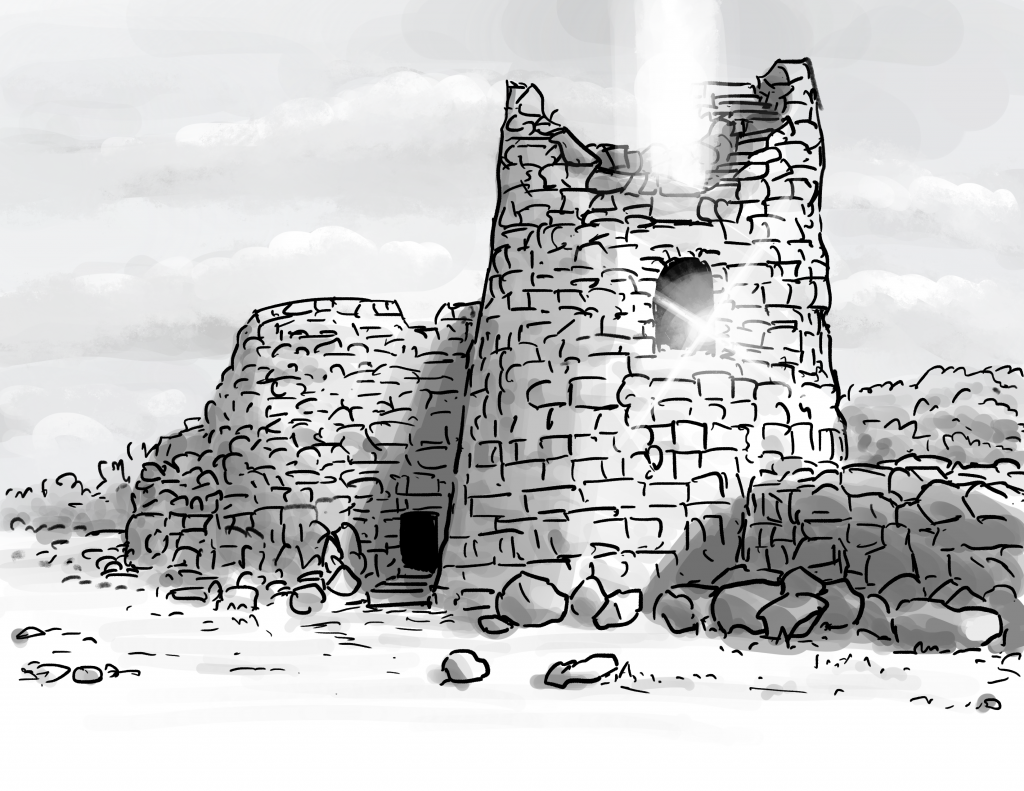
Here is what us God Learners were up to this week.
Episode 19: Jackals and Ancient Worldbuilding
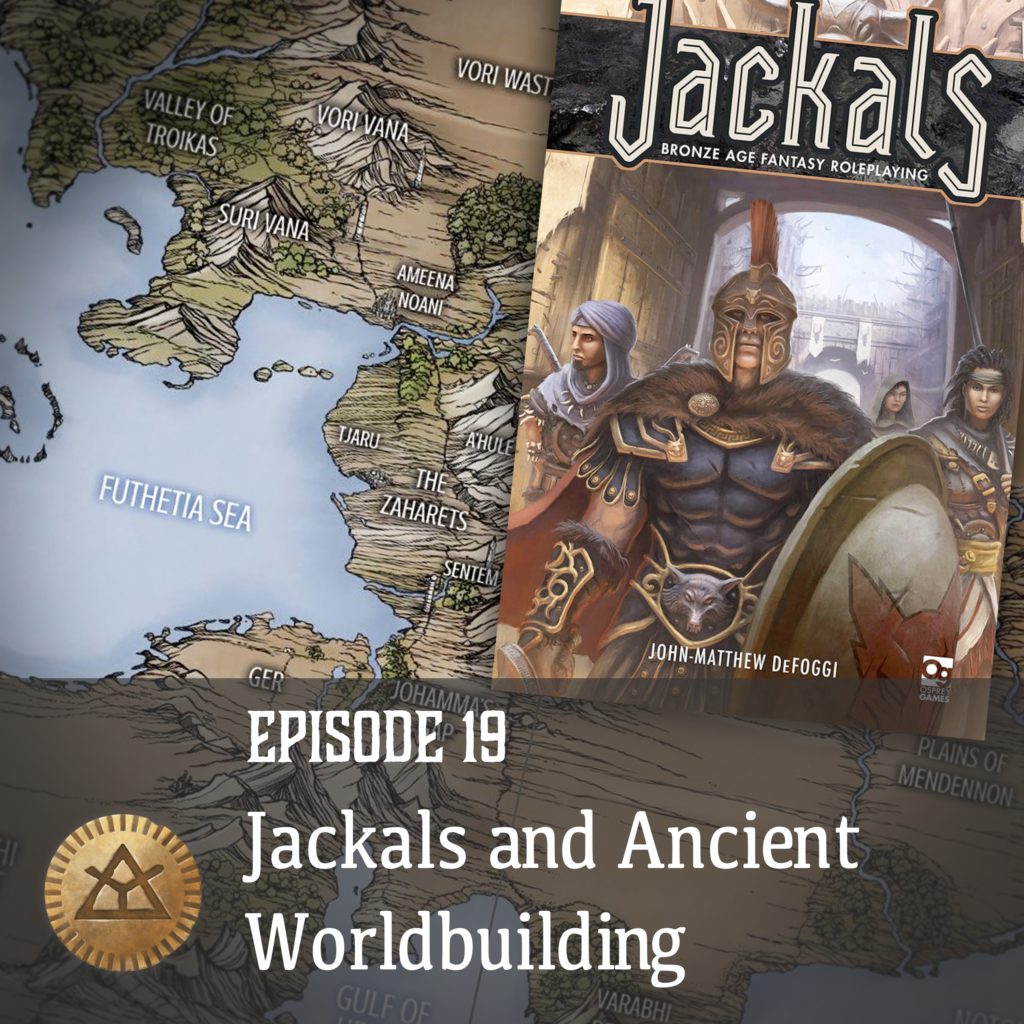
Episode 19 of our podcast welcomes Evan and JM from “Exploring Glorantha”! We discuss JM’s bronze age fantasy game “Jackals”, its worldbuilding, campaign framework, system, and what we can learn and apply to Glorantha gaming!
Chaosium News

Here are this week’s Chaosium news!
Barntar by Loic Muzy
Loic thinks back on his 2022 artistic journey (loosely translated):
In 2022 I turned with hope towards the past to recover my passion for art, and I found everything I had run away from. I am definitely embarking on some artistic changes for 2023 in order to be motivated for years to come!
He also shared his version of Barntar, for the upcoming cults book!
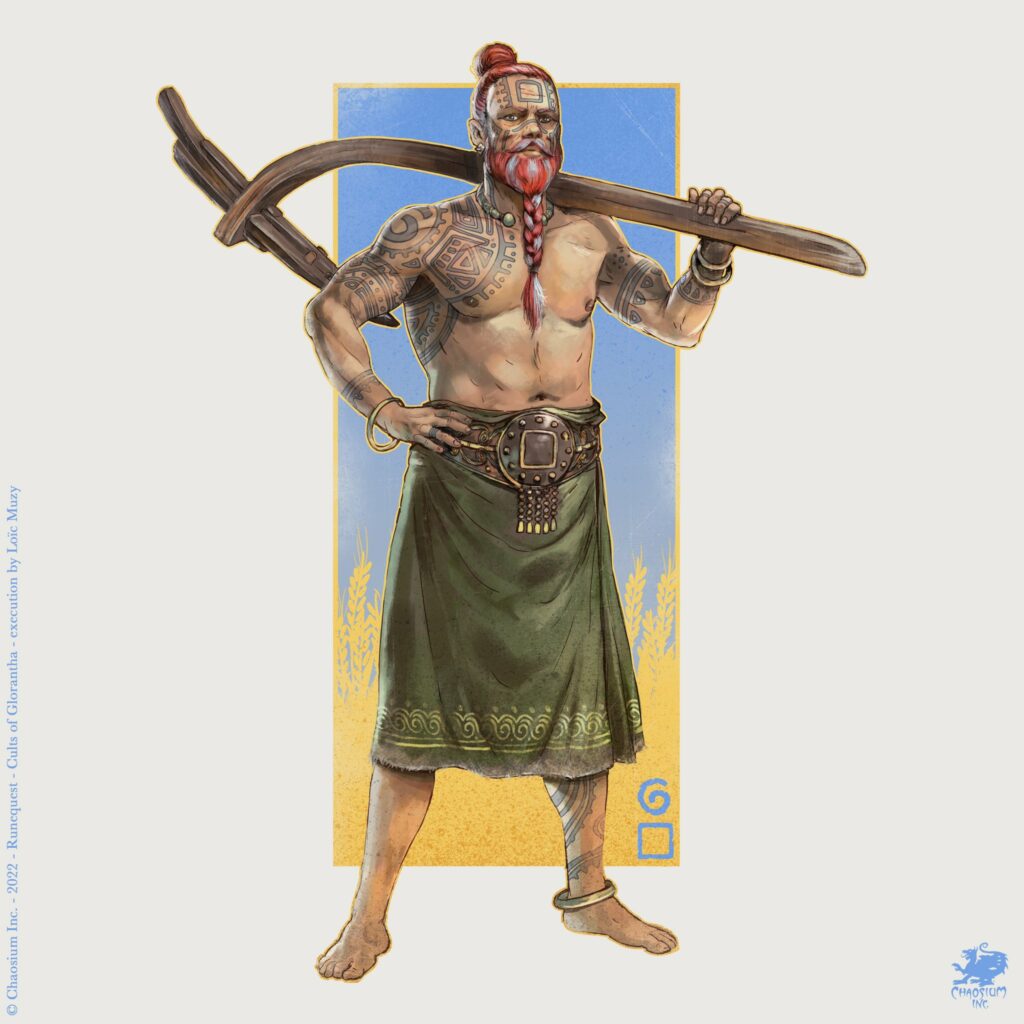
Another Quick Preview of the RuneQuest Video Game
You might remember that we saw a sneak peek at Black Shamrock’s RuneQuest video game a couple weeks ago. Now RTE News has posted a new video that shows a few more things compared to their previous one. There isn’t really much, but there’s enough to confirm a suspicion I had: the game is using the Unreal Engine! Maybe I should offer my help…
More here.
Jonstown Compendium

The Jonstown Compendium is Chaosium’s community content program for all Gloranthan games, hosted on DriveThruRPG. Disclaimer: all the relevant links are affiliate links that hopefully will let us cover some of the hosting and maintenance costs for the website and podcast! Thanks for using them!
Edge of the Empire
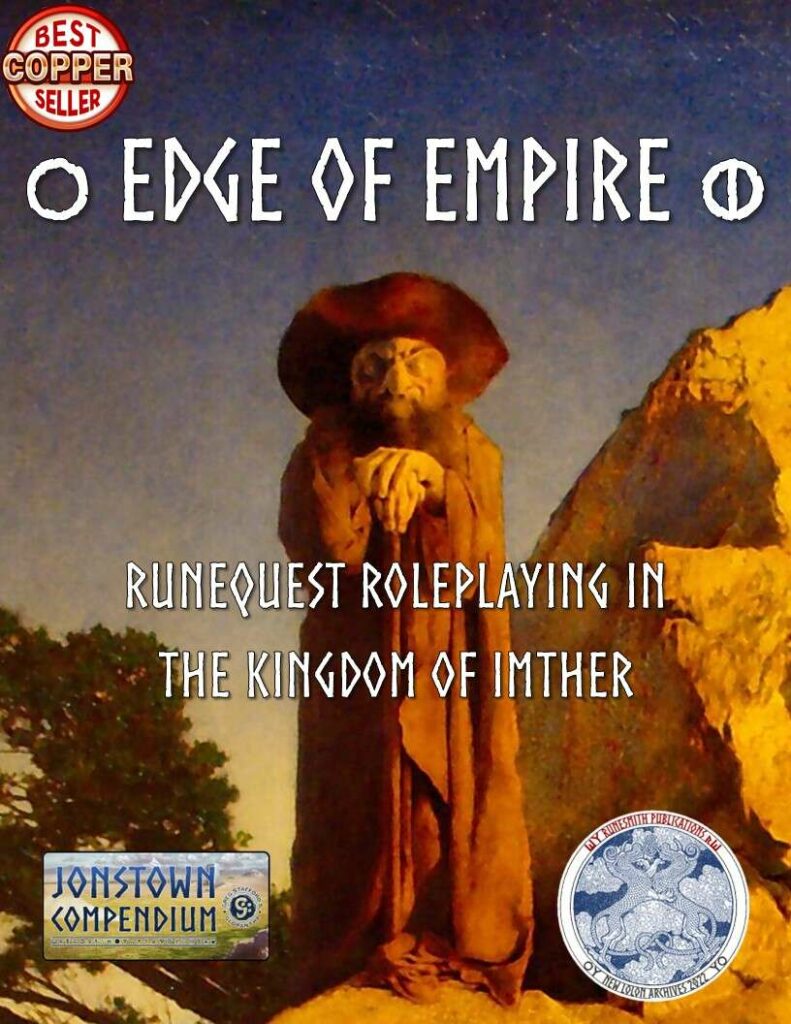
No, this isn’t a hack of the FFG Star Wars game for Glorantha: it’s the long awaited book on Imther by Harald Smith!
The Kingdom of Imther is a small, seemingly bucolic, mountainous province at the edge of the mighty Lunar Empire. It is home to herders, hunters, and cheesemakers whose king maintained a trade relationship with the mysterious dwarfs. But… the king is dead, the dwarfs have closed their brass gates, clans have rebelled, and ambitious leaders stake their claims. The HERO WARS have come to this fair and pleasant land.
If you’re not sure where Imther is, the Argan Argar Atlas has you covered. Locate Saird on the map below, and go northwest along the Daughter’s Road from it. Find New Lolon and you’re there. Imther is the area between New Lolon and Soldier’s Ferry, across from the Imther Mountains to the east. It’s the last civilized Lunar province before you head out east into Balazar and wild lands of the Griffin Mountain campaign.

If you’re an old Gloranthaphile, you might already know that Harald Smith is no stranger to Imther. Back in the mid-1990s, he published two volumes of the fanzine “New Lolon Gospel” which already focused on Imther.
Edge of the Empire presents Imther as a new homeland for RuneQuest, plus a gazetteer, some maps, gamemaster tools, and a lot more! Check it out!
The Temple of Twins
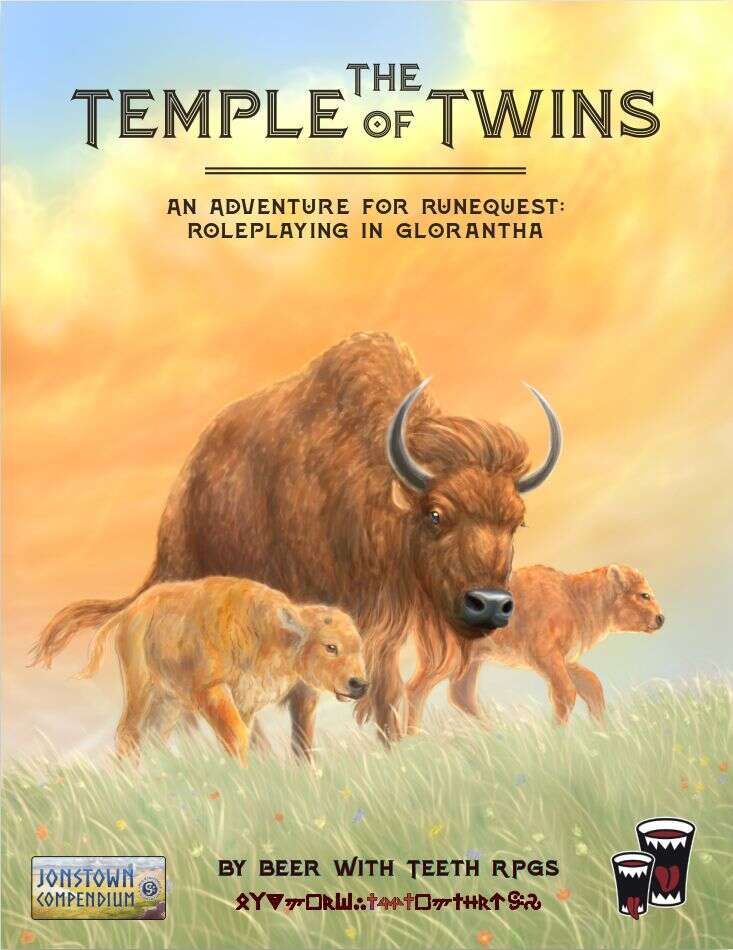
The Temple of Twins is Beer With Teeth’s latest Praxian adventure, once again meant to fit in one or two sessions of play.
The adventure is designed to be highly challenging for warriors and outsiders to Prax, and much easier for women. Eirithans in particular will find their skills called on, and Ernaldans will be useful. Combat is much more likely if characters fail at walking Eiritha’s path, but can be avoided by wise or skillful women.
Also, note the content warning accompanying the description.
Index and Catalogue Updates
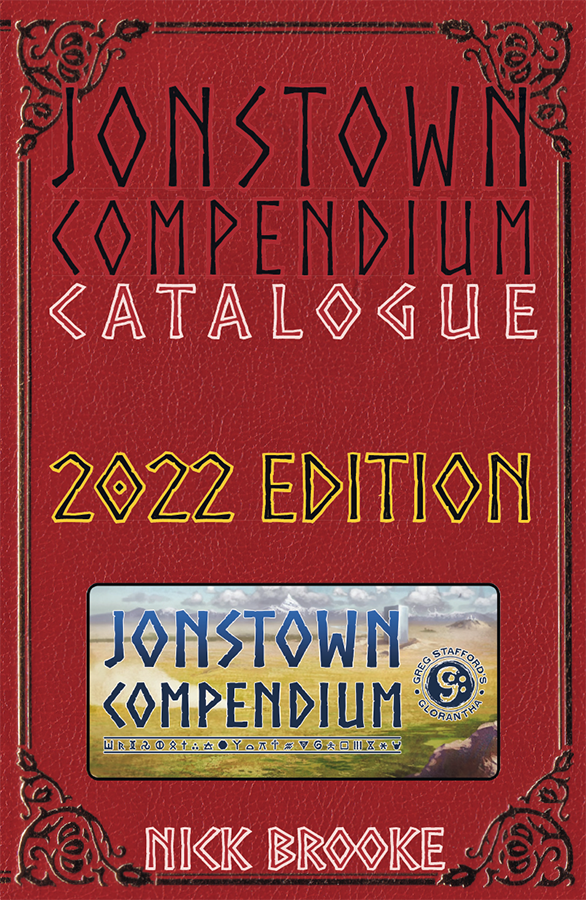
Nick Brooke, Chaosium’s community content manager for the Jonstown Compendium, has published the last update to his 2022 Jonstown Compendium Index, so it has now been merged into his broader Jonstown Compendium Catalogue, whose 2022 edition is now out on DriveThruRPG.
As the name implies, the catalogue lists all the Jonstown Compendium releases so far, complete with a lot of information to help people find PDFs they might like (review scores, adventure locations, and more). You can find more information here.
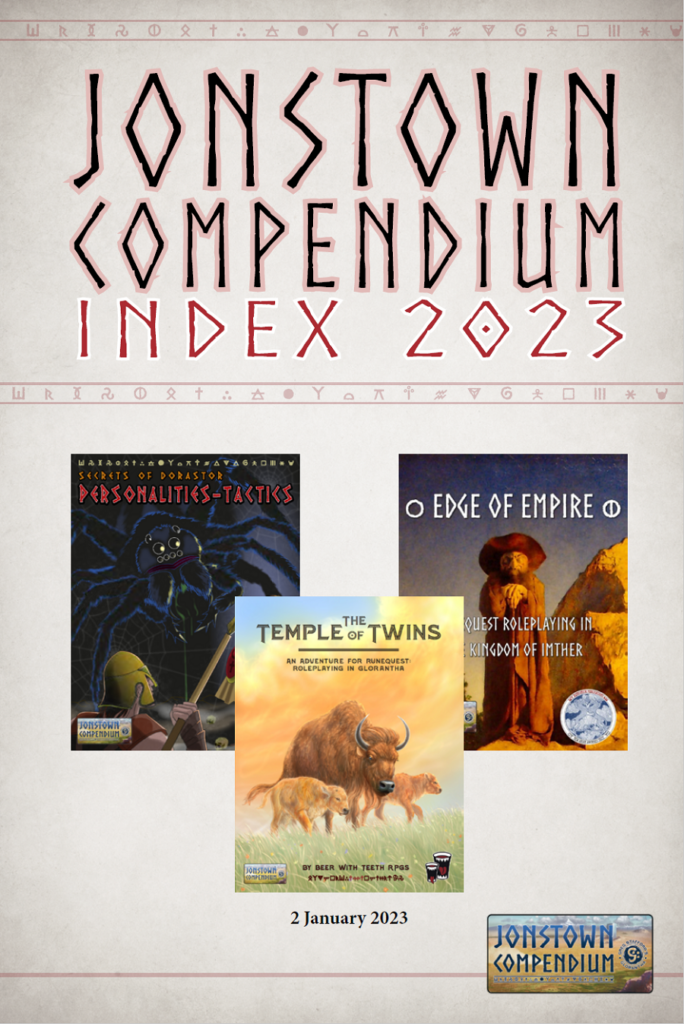
Of course, the new year also means the start of a new Jonstown Compendium Index! The 2023 Index is also now out. You know what to do!
Akhelas’ Patreon
Austin Conrad, who did the Monster of the Month series, among with other things, has started a Patreon for his RPG writing endeavours:
I’ve set up a Patreon, for those of you who like my stuff, and have run out of books to buy. Hoping to have some news out next week about future plans!
The Patreon is up here.
Jeff’s Notes

Jeff Richard, the current mastermind on everything Gloranthan at Chaosium, is often posting notes and thoughts on the RuneQuest Facebook group. Here’s our curated list from the past week. A partial archive of these sources is compiled on the Well of Daliath.
A Sense of Size
A regular staple of Jeff’s notes is some geographical comparisons between areas of Glorantha and Earth. This note reiterates these points, in case you need some context for your world-building.
Some people complain that Glorantha is too small, which I find complete nonsense. It is the size that it is. Use the smaller scale to your advantage. It is only 800 km from Boldhome to Glamour. It is less than 2000 km from Boldhome to Sog City. Let your adventures explore if they are so inclined.
I’m not sure what kind of argument “It is the size that it is” is meant to convey, but hey, I’ll raise my hand as someone who initially thought that Glorantha was too small. It might be hard to remember the days of being a Gloranthan newbie for those who have played and written in it for decades, but I do remember finding it very weird to have all these completely different cultures, climates, and mountains so small and so close together.
You can find comparably sized geo-political entities on Earth, but they tend to be on a smaller side of the scale, and Glorantha misses everything else on that sale. Of course, it makes more sense once you get deeper into the setting: Glorantha isn’t defined by tectonic activity and weather systems, it’s defined by where Earth deities died, where giants laid down, and where Sun gods are worshipped. Plus, a smaller world means more opportunities for the player characters to visit all those cool and varied places. But it takes a certain amount of lore familiarity to realize this, so of course newcomers to the setting will find the scale “wrong”. I’m biased, obviously but it seems a sensible first impression to me.
Later in the note, Jeff wisely reminds us that people in Glorantha (and in the ancient world on Earth) didn’t always stay in their village. Many people travelled far and wide and/or met travellers from far away. Cities and town are often quite cosmopolitan.
The Evolution of Malkionism
Jeff looks at the evolution of Malkionism into New Hrestolism — two of the main cultures, philosophies, and social orders that rule over western Genertela.
All Malkionism begins with the teachings of Malkion, where questions pertaining to laws of nature, the origin of the universe and the place of man in it are asked.
These are incredibly ancient religious texts – first preserved in the writings of Zzabur. Since the Expulsion it has not been possible for ordinary mortals to consult Zzabur’s library, so people are reliant on texts that have been copied and recopied over the millennia.
I always forget that Malkion isn’t any sort of original god or entity, as you might imagine from the principal figure followed by humanist wizards. He’s actually the offspring of a Storm demigod (Aerlit) and a Triolini (Warera). He’s half Air and half Water, basically.
Malkion had four sons with Britha, which I assume is the Land Goddess of Brithos, the now-mostly-gone island that was located west of Genertela. The four sons sort of define the four castes of Malkioni society: Dronar (who led and taught the farmers and workers), Horal (the soliders), Talar (the nobles), and Zzabur (the wizards). But Zzabur is sort of a shitty son. The “Expulsion” noted by Jeff here relates to that incident before Time when Malkion went around with some new rules, but Zzabur and his followers refused them. So Zzabur kicked his dad and his followers out of Zerendel which, if you squint only a bit at the God Learner maps in the Guide, sort of looks like God Time Brithos.
Note that after being “expulsed” like this, Malkion crossed the sea and founded a place called “New Malkonwal”. Some people believe this is somewhere in the Holy Country. In particular, Rikard the Tiger-Hearted thinks so, and in 1617 he seized power in Heortland and founded the Kingdom of Malkonwal. It was short lived, destroyed by the Lunar invasion of Heortland in 1620… which itself didn’t last long either. Anyway, if you want to include some wizardry bullshit and ancient Malkioni artifacts in your campaign, Heortland is nicely close by.
Anyway, back to Malkioni history:
Shortly after the Dawn, Prince Hrestol, the son of Talar Froalar, had a religion vision and was instructed by Malkion to smash down the old order and to establish justice and make the world a place for mortals. This was the first “division”- from the perspective of those who relied on the writings of Zzabur, this was heresy – an “innovation”. From the perspective of Hrestol and his companions, this came directly from Malkion and thus took precedence over his previous writings.
Yes, Hrestol is also a shitty son and grandson. The whole Malkioni family seems to have a tradition of changing up the rules of their fathers, probably just to piss them off. And from there, more disagreements split up the Malkioni people some more.
And thus Malkionism developed into many different schools of thought, especially along the following issues:
- Caste stability versus caste mobility;
- The question of Tapping;
- Metaphorical versus literal;
- Personal experience of the Invisible God versus teachings of Malkion/Hrestol/etc;
- Joy versus Solace;
- Mystical versus legal;
- Tradition versus empiricism;
- Worship of the Invisible God alone versus worship of lesser emanations (aka gods and spirits) and veneration of heroes.
[…] After Arkat, this all gets even more convoluted, as the Malkioni try to understand Arkat’s magical explorations AND try to determine where and how it went wrong. Throw in a few centuries of God Learner experiments and discoveries and you can imagine how far diverse Malkioni thought got during the Second Age.
Read some more for some notes about Zzabur’s Red, Brown, and Blue Books, which contain his notes and thoughts on the universe, the gods, the Runes, and all of that.
So if you imagine, along the western coastline of Genertela, we have many centres of intellectual discourse and discussion. Imagine the wizards debating in Leplain or Southpoint, with the most radical journeying to Sog City to consult copies of ancient texts kept within the City of Brass. This gets diffused by other wizards, taught to talars, and is forced to confront experiences of initiates and the power of cults.
The Malkioni and the Red Goddess
The Malkioni wizards apparently do NOT like this new Red Goddess business:
In 1247 the whole world saw the Red Moon rise into the Middle Air. At first it could only be seen at night, but after 1275 or so, it could be seen during the day as well.
[…] The Malkioni saw the rise of the Red Moon as the rise of terrible evil. The Red Moon is NOT anywhere in any of the sacred texts or theories of sorcery. Its appearance was unnatural and wrong – clearly the result of insane magic or even Chaos. Nothing the Malkioni learned in the intervening centuries made this any better – the Red Moon was the result of a mortal (herself the product of a mad cabal) who turned herself into a goddess within Time.
There’s also a bit in this note about Annilla, the “Blue Moon” that was killed and struck down during the Gods War:
Remember what a moon versus a planet is in Glorantha. We could just as easily refer to Annilla as a dead planet. There are myths of the Annilla, but she fell from the sky. No idea if she just hung there motionless like the Red Moon, she certainly didn’t have phases! Now we know she is associated with the Blue Streak, who causes the tides and maybe that is her.
In short there is no real objective reason to make a strong connection between the Blue Moon and the Red Moon. The Lunars do, and the cults are associated. But maybe that is a different association.
About Argrath and the Metaplot
During a thread discussing “dumping Argrath” from the Gloranthan setting, Jeff shared this bit of game designery:
And here’s what Greg and I found over decades of play. Far more players and gamemasters prefer the Pendragon approach, where the players do not have the burden of carrying the setting, but get to do cool things and interact with major figures and then go off and do their thing.
Basically, playing Pendragon with the Knights of the Round Table sort of calls for having King Arthur at the top, with his entourage of famous NPCs like Lancelot and Merlin and Gweneviere and so on.
This is very much a personal taste, and depends on the expectations of a given game. I’ve seen some people who dislike playing in Middle Earth because the fellowship of the ring and other big-name NPCs are “doing all the cool stuff”. Some settings are well suited to the characters being “The Heroes” (capital “T”, capital “H”) who shape the world with their actions. But some people aren’t interested in that, and some settings are not conductive to this sort of play. It includes most licensed IPs (Lord of the Rings, Star Wars, etc) but not all of them (Star Trek can easily have other exploration ships having as many adventures as the Enterprise, Alien has literally no “world driving” NPC, etc).
For better or worse, Glorantha was designed with a few “super heroes” shaping the world (the Red Emperor, Jar-eel, Harrek, Argrath), and a collection of “heroes” below them. The adventurers are meant to cross path with those big-name NPCs, be sent on missions by them, be smacked around by them, but not become their equal or surpass them. You’re not really meant to become the equals of Saruman or Darth Vader either. So you either find some good spots to play in those sandboxes, or you play in other settings where the top spots are left available for the PCs.
Greg and I talked about the “multiple Argraths or one” as part of the Guide to Glorantha, and we both concluded that the approach taken in the old HW material was a failure. The Guide makes it clear that there is one Argrath, and that is the approach taken from there on.
This bit might need some explanation for the Gloranthan newcomers. Some time between the 1990s and the 2010s, a lot of Gloranthan material (especially the 2000-2010-era Hero Wars and HeroQuest material) presented Argrath as a “mystery”. He was some sort of enigmatic figure whose identity was unclear, built upon hearsay and gossip from across Dragon Pass and Prax. His accomplishments were attributed to various people named “Argrath” but with a different epithet or last name. Sometimes the first name would even be changed to anagrams of Argrath, such as “Garrath”.
These various people (or personas) would be credited with, say, his rebel Orlanthi temple in Lunar-occupied New Pavis, his defense of the Giant’s Cradle that came down the Zola Fel, his friendship with Harrek the Berserk and subsequent circumnavigation of Glorantha’s oceans, and so on.
The idea was that if Argrath was a “composite figure”, some of these exploits could be accomplished by player characters. Maybe they didn’t sail the oceans with Harrek, but they did defend the Giant’s Cradle or liberate New Pavis. But from what I hear, that never really took off, and people didn’t really make use of it. As a result, all the post-Guide-to-Glorantha material gave up on the idea, and has now adopted the much simpler idea that Argrath is one guy, irrevocably tied to the metaplot. But hey, what a guy!
If you squint only a bit, you might find traces of this old approach to Argrath in some of the Jonstown Compendium entries that feature him.
Miscellaneous Notes
Here are some of this week’s other notes that I don’t have time to annotate:
- Time to update your spreadsheets! Jeff shares some aggregate cult membership numbers for all Lunar provinces (Vanch, Imther, Aggar, Holay, and Tarsh).
- Some notes about how the Lunar Empire regulates worship of foreign deities, and in particular the worship of Orlanth. They can close down some temples here and there, but they can’t easily keep people from doing what they want.
- Learn about the Seventh Soul, the element of “Liberation” that was added to humans as a gift (and a curse) by the Red Goddess. This is of course based on a Dara Happan and/or Lunar point of view — the six original souls are very much from the solar culture, and the Orlanthi think about this differently.
- A quick history of the Red Goddess and the submission of the Dara Happans and their Yelm cult to the Lunar Red Emperor. Plus, Jeff’s take on Argenteus and his Seven Daughters.
- Brolia and Anadiki are two regions that are inhabited by poor, backwater Orlanthi hillbillies, at least compared to the wealthier and more cultured Sartarites who maintain very lucrative trade routes between the Holy Country, Peloria, and Prax. So Brolia and Anadiki are good options for a different, more rural game setting.
- A quick history of the different “clusters” of Orlanthi through the ages.
Community Roundup
The community roundup is our highlight of interesting things being mentioned in the Glorantha-related Facebook groups, sub-Reddits, and other similar online places.
A-Sharp Games on Sale for Sacred Time
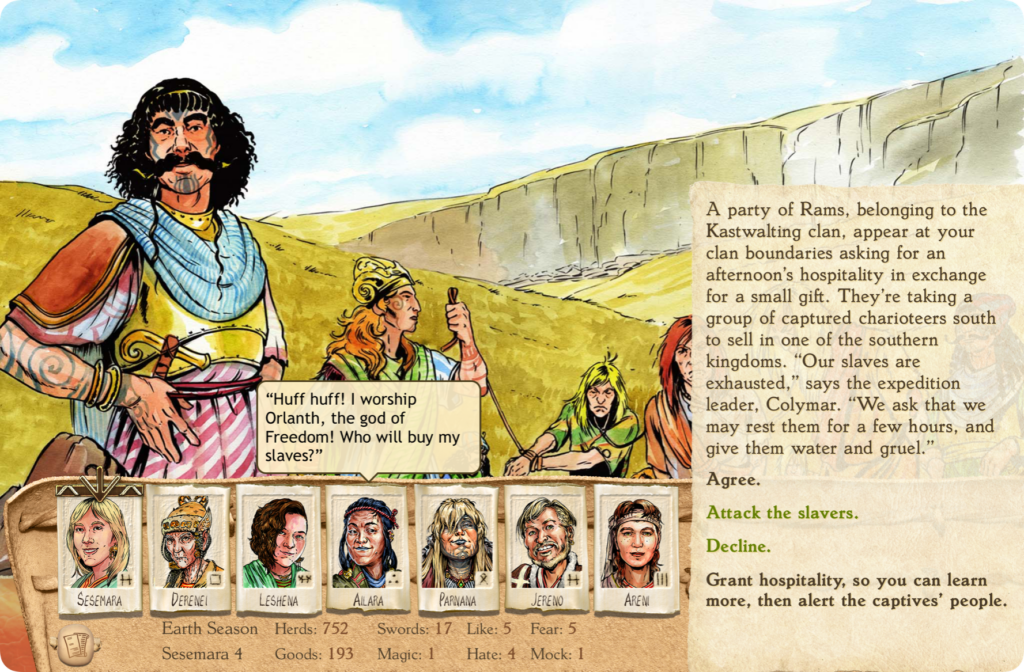
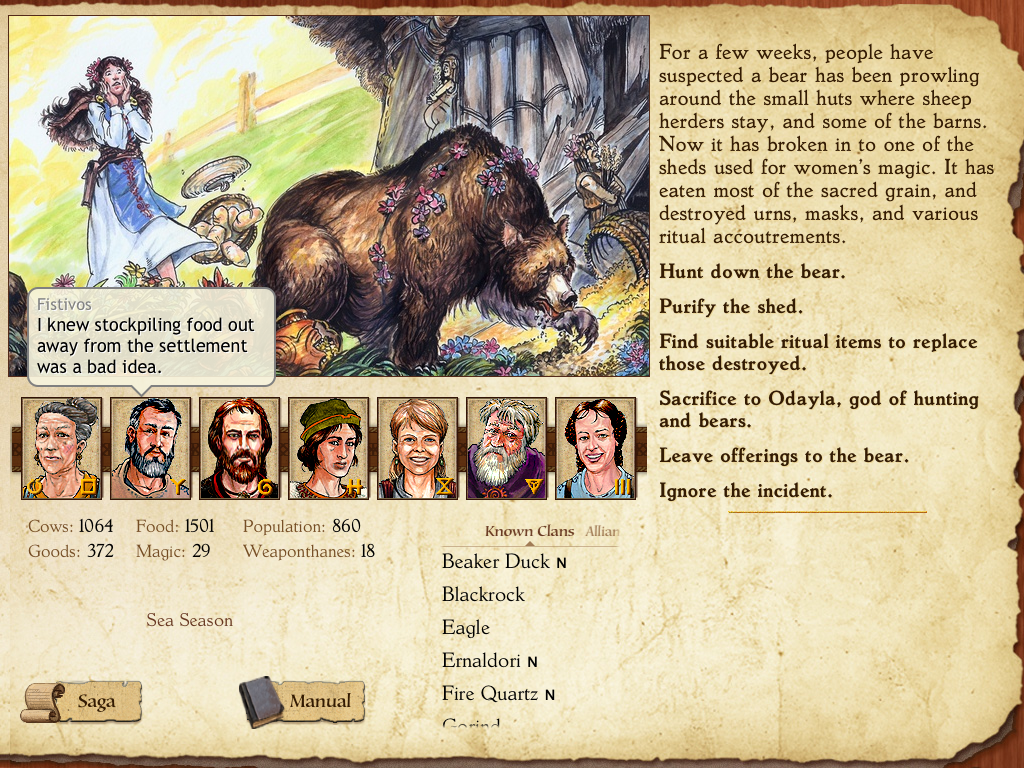
A-Sharp’s famous Gloranthan video games, King of Dragon Pass and Six Ages, are on sale for Sacred Time! I’m not sure how long that will last so hurry up if you still haven’t checked those out!
Both are “clan management” games, in which you sort of play a clan chieftain and its clan ring. You decide who to raid and who to ally with, how to handle incidents, what gods to sacrifice to, and so on… hopefully leading your clan to wealth and glory! King of Dragon Pass is focused on the Orlanthi during the colonization of Dragon Pass, before Sartar unified all the clans and tribes, built cities, and founded his Kingdom. Six Ages is focused on the Hyalorings (related to the sun-worshipping Dara Happans) during the God Time, so there are more deities and spirits around, more horse riding, and more sunny days.
Six Ages is available here for Apple devices, and here for PC. King of Dragon Pass is available here for Apple devices, and here for PC. Both games are great to play on a tablet.
If you want more information, Runeblogger wrote a test of Six Ages, and interviewed David Dunham on the topic. Check those out too!
The Gaming Gang on Why You Should Play RuneQuest
Jeff McAleer of the Gaming Gang tells you why you should play RuneQuest!
Don’t get too excited, this is the first video in his new series “Why you should play…” which will definitely tell you to play a lot of other games too. But hey, he picked RuneQuest first so that’s got to count for something.
Bryon is Now up to the Letter “S”
I’m talking about his series of videos on the Red Book of Magic, of course! Bryon is going through all the spells and giving his thoughts and comments on each. He actually already finished all the Rune spells (the last video on that was here), and he’s now up to the letter “S” in the Spirit Magic spell list… which means he’s almost done with the entire book. You can find all his videos on his channel.
Pious Noble at the Heler Temple
Lee O’Connor shares an illustration of a “pious noble” for an upcoming Greydog clan book by Jon Qaife:
She’s weighed down with jewellery but she’s on her knees in the temple (of the gender-fluid rain god) because she’s a good sort.
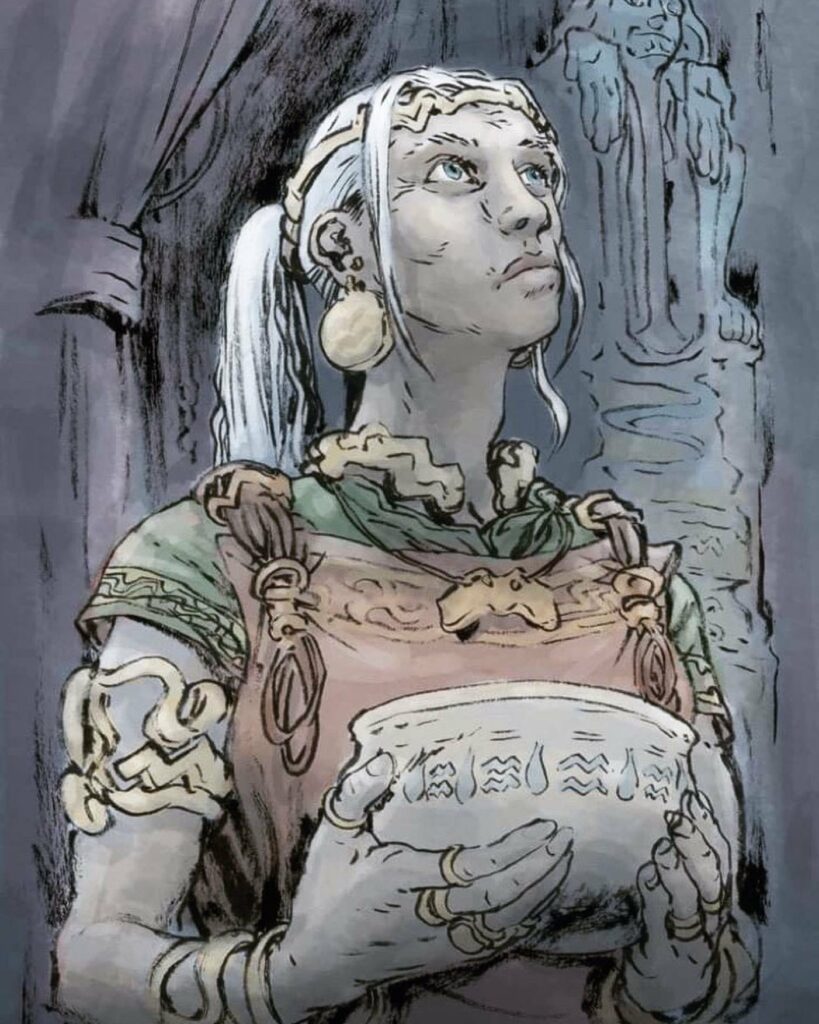
Thank you for reading
That’s it for this week! Please contact us with any feedback, question, or news item we’ve missed!


